This worldwide satellite-based communications system went from dream to reality in a decade but quickly failed in the market; its revival took persistence and luck, plus a new customer base.
The first part of the article explained the inspiration and rationale for the Iridium system. Three major elements were required to make the Iridium concept and dream – and it was truly a dream – into reality:
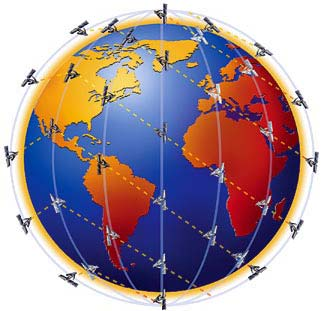
1) A global constellation of 66 satellites (plus about half a dozen or more “spares”), but not in the usual geosynchronous orbits or even low-altitude, low- propagation-delay orbits. Instead, polar orbits would be used for 100% Earth coverage (Figure 1). The original calculations showed that 77 such satellites would be needed (plus spares), so the system was named after element 77 on the periodic table (subsequent analysis showed that just 66 satellites were needed, but the re-naming it Dysprosium for the 66th element was rejected). The satellites were arranged in six orbital planes of 11 satellites each and inclined at 86.4°, just a few degrees off a perfect north-south axis; these orbital planes criss-cross at each pole. At the height of 485 miles (781 km), each satellite orbits every 100 minutes, with a round-trip Earth-satellite link propagation delay of 5 msec, which is very acceptable for two-way speech.
These satellites were not just simple connecting points for one-hop, Earth-based connections between users. Instead, they were orbiting MTSOs which could dynamically link and unlink via the Ka microwave band (26.5 to 40 GHz) to any of four adjacent satellites: the ones immediately before and after in the same orbital plane, as well as the closest ones in adjacent planes (Figure 2). A call in progress might go through one, two, or more satellites and be handed off as the satellites orbited; these handoffs would occur every minute for a given call connection. As a result, a call’s link delay was just the 5 msec plus the satellite-to-satellite link delay of another few milliseconds, far less than the geosynchronous link with its 240-msec hop delay.
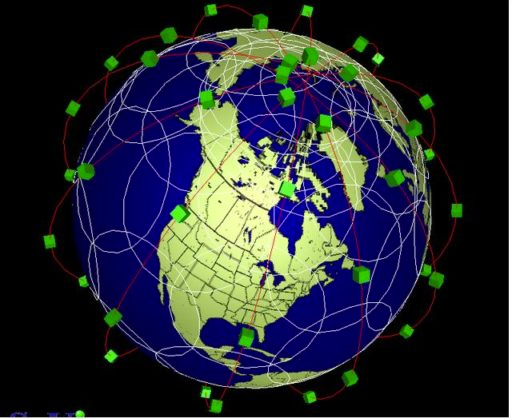
The fabric topology and software needed to make this work were unlike anything orbited. The processing and routing demands were stringent, yet available power was limited to the solar panels. The first-generation designs measured about 4 meters by 1.8 meters, weighed 689 kilograms (1,519 lb) with innovative antennas for communicating with ground stations as well as adjacent satellites (Figure 3). Due to the low orbits, the satellites were in Earth-circling radiation belts and needed radiation-hardened components, yet still would have reduced life.
2) Satellites alone were only part of the overall plan. Earth-based stations called gateways were needed to link to the 66 satellites and to each other, to complete the system management and fabric, and also link to the terrestrial phone network. These gateways (there were roughly two dozen), would be located around the globe, in countries that had a technology base and some that had nearly none.
The software needed to link these gateways and manage them in real-time, along with the actual links between them, was another high-risk challenge. Communication between satellites and earth stations used 30 GHz for the uplink and 20 GHz for the downlink. Some gateways were owned by the hosting country, while others were owned and operated by a private licensee in that country, with the government’s official approval. Overall system management was done by a dedicated Satellite Network Operating Center (SNOC) facility—also a major undertaking.
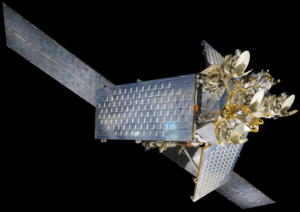
3) Finally, handsets had to be provided so users could actually contact the satellite constellation. Motorola contracted with several handset vendors, including Kyocera and their own handset group, to design and build these. The first units were relatively large and bulky (3 pounds), and priced at several thousand dollars, and subsequent units have shrunk considerably in size, weight and cost, and are now close but not quite to the parameters of concurrent, mass-market standard cell phones (Figure 4). Iridium phones have an unusual external antenna, which is a technical necessity for linking to the satellites. Some of the phones can even connect to a small, separate, domed-shaped antenna for a better signal.
Making it happen
The technical challenges across all three aspects – satellites, gateways, and handsets – were enormous, obviously. The design teams had to devise new topologies for these unique mesh networks, new algorithms for call handling and handoff, new RF designs including antennas, and make it all fit into the modest-size package.
Unlike conventional communications satellites, where each one is uniquely designed, built, and launched, a large number of Iridium satellites mandated a “mass production” approach. The idea was to build identical satellites in clusters of ten or more while only incorporating any changes in subsequent batches if there was a demonstrable benefit. Thus, Iridium standardized the satellites to the extent possible, which was a radical approach.
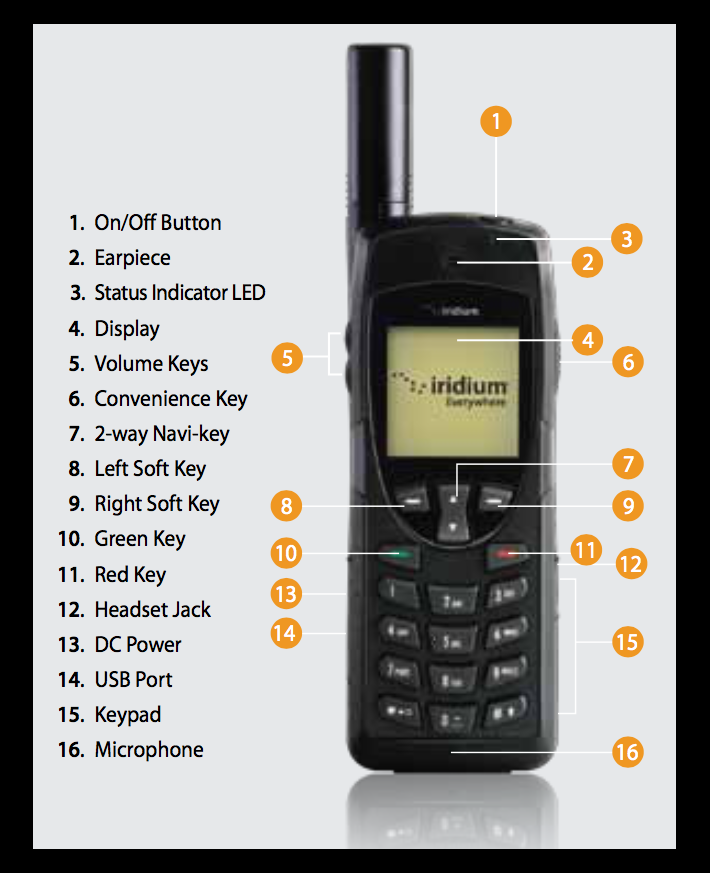
The launches would be done from sites across the globe, including China, French Guyana, and the Soviet Union (before the breakup), using contracted services. A typical rocket would include at least six satellites, and sometimes up to a dozen, to save time and cost. While this provided many operational advantages, it also added risk, as when a rocket exploded or failed to orbit. The entire multi-satellite payload was lost (which happened several times).
While building identical units is not “mass-production” in the consumer-product world, it very much was for satellites, which, until that point, were unique, no-two-alike units. Note that the mass-production concept is now widely used, with the multiple satellite load and launch of hundreds and thousands of relatively small satellites (about 500 pounds/225 kilograms) in the StarLink system from SpaceX.
The other side of getting Iridium “off the ground” had little to do with technology and everything to do with spectrum assignment, regulatory issues, and global reach. The Motorola-driven Iridium system had to get some specific spectrum allocations from the International Telecommunication Union (ITU – the United Nations specialized agency for information and communication technologies) at its biannual meeting of over 100 countries, and also get license agreements with the countries that would host the gateways. Both allocation and agreements became extremely time-consuming and bureaucratic battles, as countries objected for security, financial, and political reasons.
In the end, what solved both the spectrum and gateway problems was a combination of Motorola’s long-standing relationships with key people in many of the countries, as well as promises and guarantees to gateway operators and their governments (and many rumors of “shady” payments and more). As a highly respected vendor for decades, Motorola’s local agents were able to actually call on key government ministries and officials, get their attention, and work out needed agreements.
The next part describes how Iridium soon failed as a business and how it came back from the nearly dead.
EE World Content
Iridium Satellite Connectivity Added to Versatile ConnectPort X5 R Rugged Gateway
DeLorme Unveils Plans for Iridium-Based Two-Way Satellite Communicator
Basics of GPS receivers
GPS, Part 2: Implementation
GPS, Part 1: Basic principles
External References
- “Eccentric Orbits: The Iridium Story,” John Bloom, Atlantic Monthly Press, 2016.
- “Iridium Will Host Science Payloads,” IEEE Spectrum, Nov. 30, 2009
- “The Collision of Iridium 33 and Cosmos 2251,”Aerospace, December 10, 2015
- “A guide to useful, useless, official, and unofficial Iridium websites.”
- “The Rise and Fall and Rise of Iridium,” Air & Space Magazine, September 2004
- “Iridium ends legacy satellite service, switches all traffic to Next fleet,” Space News, February 2019
- “SpaceX completes Iridium Next constellation,” Space News, January 11, 2019
- “Iridium starting to deorbit legacy satellites as Next constellation comes online,” Space News, May 1, 2017
- “Elon Musk’s Ambitious Communication Project to Ring Earth with 40,000 Satellites,” News18, Sept 19, 2020
- Wikipedia, “Starlink”
- “Starlink: SpaceX’s satellite internet project,” com, January 17, 2020
- Thales Group, “Happy Birthday Iridium Next,” January 14, 2020
- PhoneIsMobile, “Iridium Satellite Phone”
- Wikipedia, “Iridium satellite constellation.”
- Wikipedia, “Inmarsat”
- Wikipedia, “Thuraya”
- Wikipedia, “Globalstar”






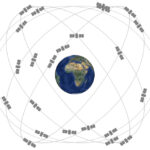
Leave a Reply